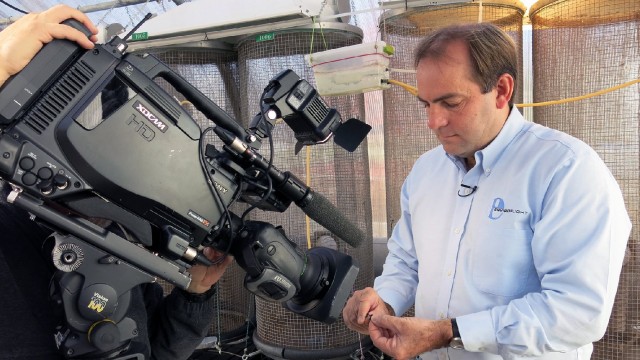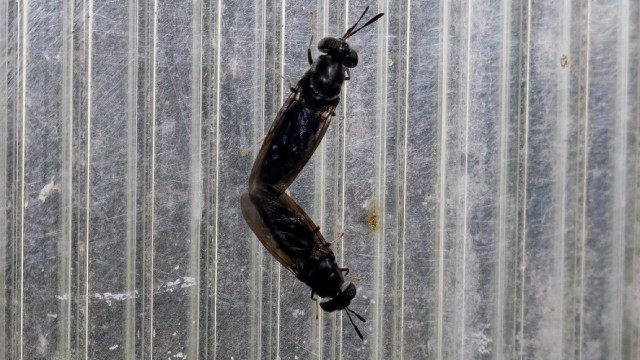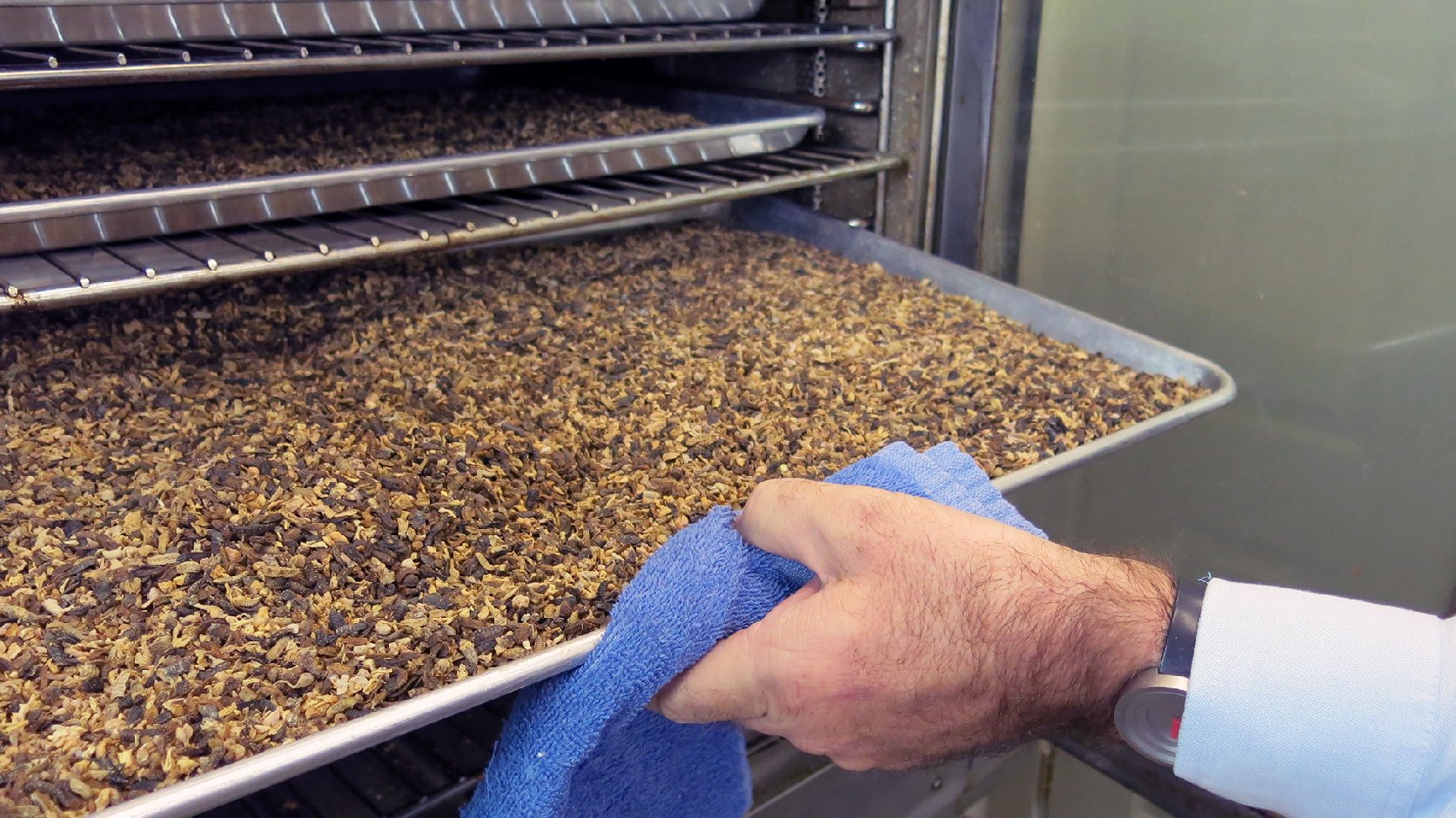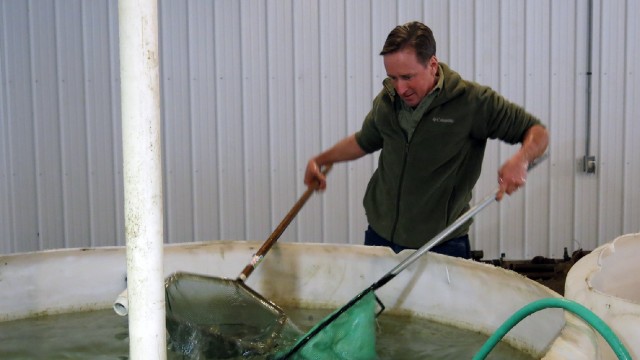Yellow Springs, Ohio, has been known for its counter-culture vibe since the 1960s, but the day the bug farm arrived its eccentricity rating went up a notch.
Consisting of a few tidy buildings, EnviroFlight sits across from a hip brewpub in an unassuming industrial park. It houses millions of bugs, but you wouldn’t know it from the outside -- or from the inside for that matter. The “production room” is so bright and clean it could be an industrial bakery. But look closely inside one of the dozens of stainless steel vats and you’ll see writhing insect larvae, happily munching on cookie and cracker crumbs.
The larvae are those of the black soldier fly, a native, nonpathogenic insect. The larva’s size increases by 5,000 times in the span of just a few weeks. Their fast growth is key to the operation, but so is their food: mostly pre-consumer waste, aka the scraps from big food manufacturing facilities. Chicken-nugget breading is often on the menu, but sometimes it’s broken cookies or spent grains from the adjacent brewpub -- whatever is cheap and available. “They’ll eat anything,” said Glen Courtright, the man at the helm of the operation.

For a bug farmer in a hippy town, Glen Courtright isn’t what you’d expect. An ex-Naval Intelligence Officer and engineer, he’s now an entrepreneur on the ground floor of what he believes is the next big thing in agriculture. He’s spent years tinkering with the most efficient way to grow his bugs. “The goal here is to grow bugs in a safe and responsible manner to get a safe product into our food chain,” said Courtright.

But where on the food chain will Courtright’s bugs reside? Although his “bug protein” can certainly be used as an alternative protein source for humans, Courtright is very clear that he doesn’t think bugs will be crawling onto our plates anytime soon. Instead, he sees his bugs, among other things, as a feed augmentation for farmed fish. The appeal to fish is simple. “Fish normally eat bugs in the wild,” said Courtright, referring to the fact that aquatic bugs make up a significant portion of most wild fish diets.

Farmed fish generally eat a combination of corn and soy fillers paired with fish meal, made of ground up small fish like anchovies and sardines. Corn and soy are cheap and plentiful sources of protein and fat, but the most popular farmed fish (salmon, trout, perch, tilapia) are carnivorous and not inclined to eat food that doesn’t contain fish meal. According to Dr. Tony Forshey, chief of animal health for the Ohio Department of Agriculture, it’s a matter of taste. “Fish meal tastes good for the fish,” he said, “so in order to get them to eat it, they have to like it and they have to like the taste of it.”
